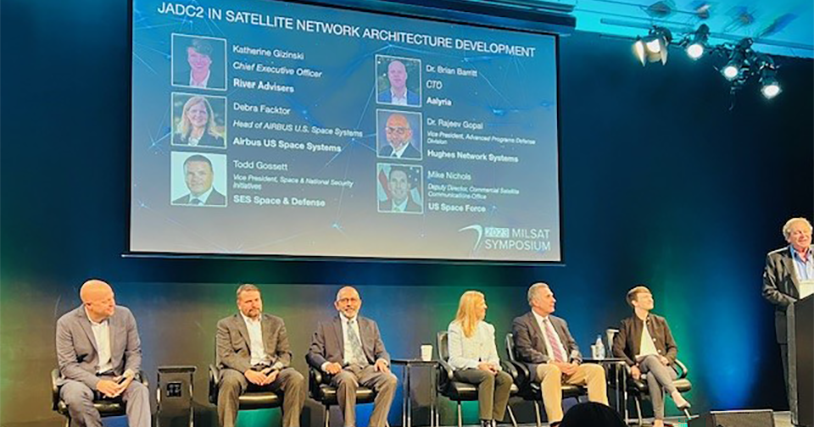
During this year’s Silicon Valley Space Week, two popular conferences––Satellite Innovation and MILSAT Symposium––were once again combined into a single 4-day event. With over 800 decision makers in attendance and a lineup of more than 120 speakers, the event served as a dedicated forum for national space defense and industry leaders to gather, share and engage.
Brig. Gen. D. Jason Cothern, Deputy Commander, Space Systems Command, US Space Force, set the tone during his keynote speech when he stressed, “This new space race is not a marathon, it is an all-out sprint. We must push the envelope, use all the tools at our disposal and break down barriers in order to prevail against our pacing challengers.”
Within the context of pushing the envelope and breaking down barriers, here are my top three takeaways from Silicon Valley Space Week:
Resilient, secure communications on the ground and in space are essential––and viable with SatCom plus 5G.
Striving to outpace global challengers requires that the Department of Defense (DoD) can count on its networks to be fast, secure, available and reliable. The combination of satellite communications (SatCom) and 5G technology can improve resiliency. Satellite communications provide both primary and backup options for global connectivity, especially in remote or disaster-prone areas. In the event of a failure or disruption in terrestrial communication networks, satellite connections can take over, ensuring that critical communications remain intact. Such redundancy is vital in scenarios that demand consistent and secure communications, such as on-the-ground operations, emergency response or disaster recovery. The integration of 5G technology––for enterprise-wide or tactical deployments––has further enhanced speed, availability and reliability.
The government will buy where they can and build only if they must.
One of the most dramatic paradigm shifts in recent years has been the DoD’s recognition that there are tens or even hundreds of billions of dollars in commercial investment and infrastructure to create 5G capable systems. These proven innovations are available today to increase defense capabilities and accelerate time to deployment––saving the government substantial effort, time and expense. In short, the MILSATCOM capabilities of tomorrow will soon look like the commercial capabilities of today.
International partnerships are necessary to win the fight against adversaries.
In the past, while highly secure, the DoD’s proprietary networks had complicated practices to share data and collaborate. Breaking down barriers includes vanquishing these types of stumbling blocks and expanding our national aperture in delivering timely and secure services at the edge. With Hughes’ advanced Smart Network Edge and compute solutions orchestrating an enterprise-wide scale for monitor and control, as well as multi transport paths, including 5G, the global reach possibilities are significant. The augmentation of services via 5G devices and sat-to-device applications makes interoperable, secure communications between global partners easy to establish and maintain for the benefit of our warfighters.
Silicon Valley Space Week 2023 brought together the brightest minds and leaders in the space and defense industries to tackle today’s pacing challenges. As we navigate the sprint to secure the future of space technology and national defense, it's clear that resilient communications, collaboration between DoD and the commercial sector, and international partnerships will be critical for protecting and enabling our warfighters. Collectively, they will shape the trajectory of space innovation for years to come.
Learn more about how Hughes delivers secure defense communications solutions anytime, anywhere.